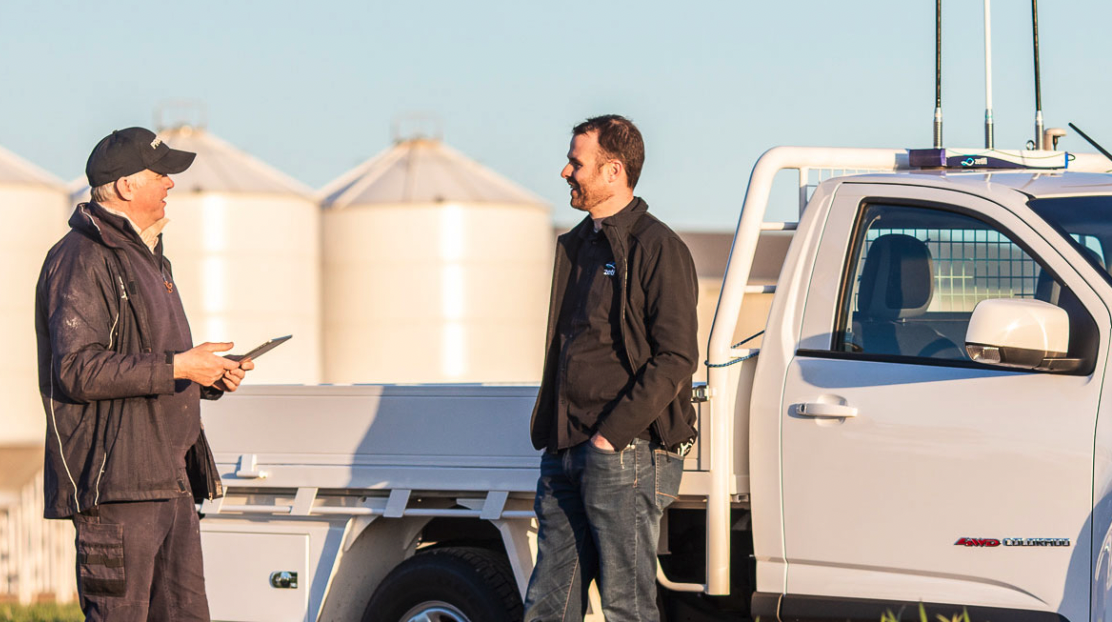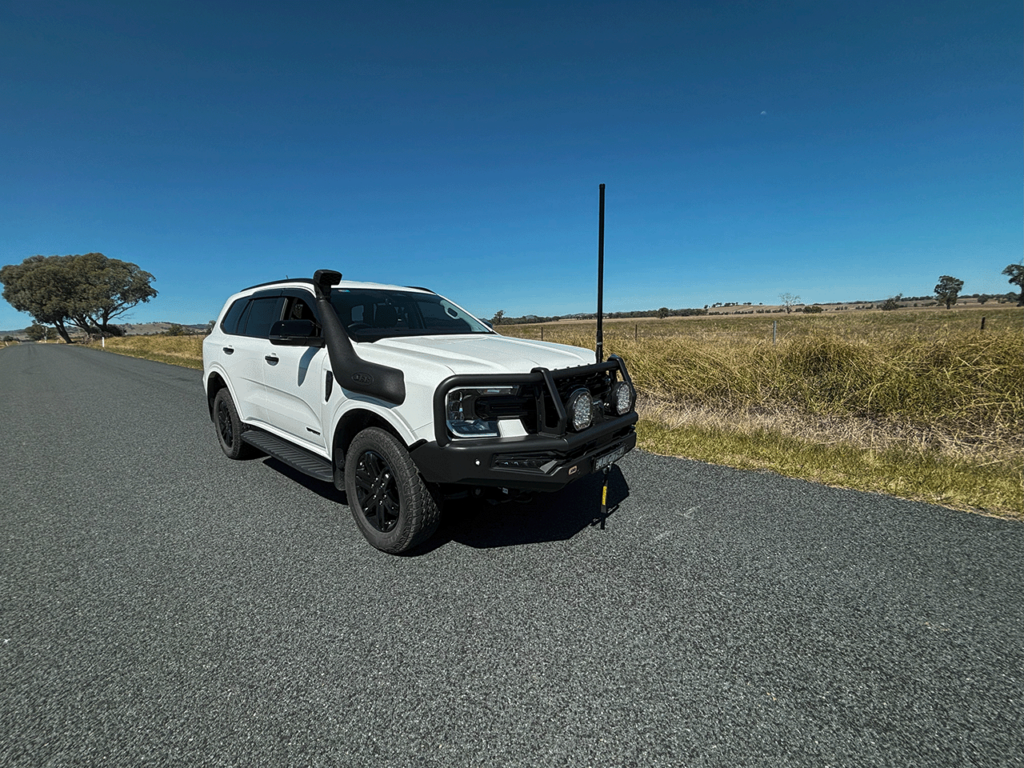
Zetifi founder and CEO Dan Winson (right) is taking his Wagga-made technology to the world. Photo: Supplied.
A Wagga Wagga-based tech company is stepping in to help cover the telecommunication gap anticipated by the upcoming shutdown of the 3G network.
Zetifi was founded in 2017 on the idea of keeping farmers and people in regional areas connected, and over the past seven years the team has developed a range of products to get your Wi-Fi working in the bush.
From its humble beginnings in the back room of a Wagga computer store, Zetifi has now launched the world’s first “location-aware smart antennas”.
“The 3G shutdown has been on the radar for years and it’s something we need to take seriously,” said Zetifi CEO Dan Winson.
“There are a lot of people who will need to upgrade their cellular boosters and antennas to make them work with 4G and 5G.
“From the day we started talking to regional and rural communities about connectivity, the thing we heard most often is they just want their phones to work.
“There are hundreds of thousands of vehicles in Australia with cellular boosters, and our smart antennas provide a better experience for people using them.”

Zetifi’s new smart antennas are a world first. Photo: Supplied.
Commercial manager Rob Lansdown explained that terrain plays a significant role in antenna performance.
Zetifi’s smart antennas can adapt to the location and automatically switch between high and low-gain modes for the best signal.
“It’s the world’s first antenna that has an integrated processor, a GPS sensor and a tilt sensor, and also a dual-gain antenna width that can do high and low gain,” he said.
“Low gain pushes out a rounder but shorter pattern which is suitable for hilly areas, but a high-gain antenna with a longer, narrow pattern is more appropriate for open flat country.
“What we do is load a terrain map that tells the antenna, based on a GPS, whether it’s in a hilly or flat, high-gain or a low-gain area, and it automatically switches between those two modes to optimise the performance.”
The product launch comes as Telstra has announced that it will delay the 3G network shutdown until 31 August amid concerns that customers could be blocked from making emergency calls.
Last month, Telstra revealed more than 100,000 Australians were yet to upgrade their devices.
The 20-year-old network had been due to shut down on 30 June but the telco will postpone the closure by two months to give people more time.
Typically, the regions bear the brunt of connectivity issues and there are concerns that the switch will not only impact mobile phones, but also farm machinery and specialist equipment.
Mr Lansdown said the Wagga-based company was well placed to offer a solution.
“There are a lot of people whose antennas were previously designed to work very well on the 3G network but won’t work after the switch,” he said.
“I think that the main contribution these antennas are going to make is that they not only have the innovation and being able to be in the right terrain mode, but also it’s very well tuned for the future with 4G and 5G frequencies.”
Zetifi has grown quickly to become an industry leader in developing technology for remote telecommunications and Mr Lansdown said the company was on track to scale up production.
“We’ve brought in a few new team members in the last couple of months in sales and marketing roles as we ramp up and go from being a product development and engineering company through to actually getting these products out there into the market,” he explained.
You can learn more about Zetifi and its new smart antennas on its website.
Original Article published by Chris Roe on Region Riverina.








